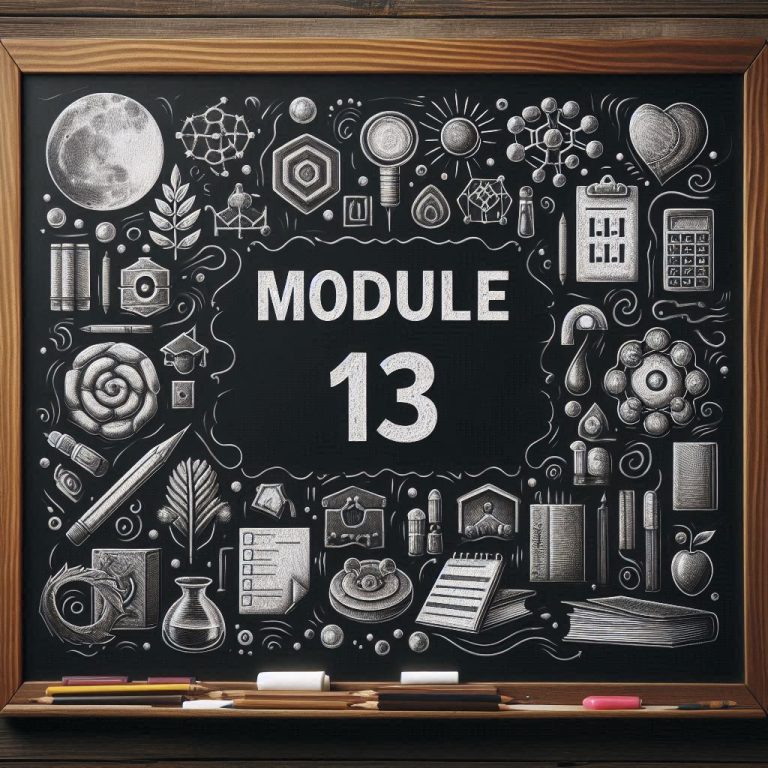Learn Quickly with Our ESL Sentence Master AI Learning Tool and Chatbot: ESL Sentence Master
Simple Sentences: Definition, Structure, and Examples
What is a Simple Sentence?
A simple sentence is the most basic type of sentence in English grammar. It contains one independent clause, which means it expresses a complete thought with just one subject and one predicate (verb). Simple sentences can stand alone and make sense by themselves.
Essential Components
Every simple sentence must have two key parts:
Subject: The person, place, thing, or idea that the sentence is about Predicate: The verb and any words that tell what the subject does or what happens to the subject
Structure Patterns
Simple sentences can follow several patterns:
- Subject + Verb: “Dogs bark.”
- Subject + Verb + Object: “Sarah reads books.”
- Subject + Verb + Complement: “The sky is blue.”
Important Characteristics
Simple sentences can still include descriptive words (adjectives and adverbs) and prepositional phrases while remaining simple. The key is that they contain only one independent clause. They can be short or relatively long, but they express just one main idea.
Examples of Simple Sentences
Here are various examples showing different structures:
- “The cat sleeps.” (subject + verb)
- “Children play games.” (subject + verb + object)
- “My grandmother bakes delicious cookies every Sunday.” (longer simple sentence with modifiers)
- “The tall building stands downtown.” (subject with adjective + verb + prepositional phrase)
Ten Simple Sentence Examples
- The rain falls gently.
- Students study hard for exams.
- My sister loves chocolate ice cream.
- The old oak tree provides shade.
- Bright stars shine in the night sky.
- The teacher explains the lesson clearly.
- Fresh flowers bloom in the garden.
- The small puppy chases its tail playfully.
- Ocean waves crash against the rocky shore.
- The skilled chef prepares gourmet meals daily.
Simple sentences form the foundation of all writing. Once you master simple sentences, you can combine them to create more complex sentence structures like compound and complex sentences.
Compound Sentences: A Complete Guide
Definition
A compound sentence is a sentence that contains two or more independent clauses (complete thoughts) that are joined together using coordinating conjunctions, semicolons, or conjunctive adverbs. Each independent clause in a compound sentence could stand alone as a complete sentence, but they are connected because they express related ideas.
Structure and Components
Independent Clauses
An independent clause contains:
- A subject (who or what the sentence is about)
- A predicate (what the subject does or is)
- A complete thought that can stand alone
Methods of Joining Independent Clauses
1. Coordinating Conjunctions (FANBOYS)
- For, And, Nor, But, Or, Yet, So
- Use a comma before the coordinating conjunction
- Pattern: Independent clause + , + coordinating conjunction + independent clause
2. Semicolons
- Used when the independent clauses are closely related
- Pattern: Independent clause + ; + independent clause
3. Conjunctive Adverbs
- Words like however, therefore, meanwhile, furthermore, consequently
- Pattern: Independent clause + ; + conjunctive adverb + , + independent clause
Examples by Method
Using Coordinating Conjunctions
- “The rain stopped, and the sun came out.”
- “I wanted to go to the movies, but all the tickets were sold out.”
- “We can order pizza, or we can cook dinner at home.”
Using Semicolons
- “The concert was amazing; the band played all their hit songs.”
- “Sarah loves to read mystery novels; her favorite author is Agatha Christie.”
Using Conjunctive Adverbs
- “The weather forecast predicted snow; however, it remained sunny all day.”
- “Tom studied hard for the exam; therefore, he felt confident about his performance.”
Ten Compound Sentence Examples
- The library was crowded, so I decided to study at home instead.
- Maria loves chocolate ice cream; her brother prefers vanilla.
- The team practiced every day, yet they still lost the championship game.
- We can take the highway to get there faster, or we can enjoy the scenic route through the mountains.
- The restaurant received excellent reviews; however, the service was disappointing when we visited.
- Jake forgot his umbrella, and he got completely soaked in the sudden downpour.
- The movie was three hours long; nevertheless, it kept the audience engaged throughout.
- I wanted to call you earlier, but my phone battery had died.
- The garden looked beautiful in spring; the flowers bloomed in vibrant colors everywhere.
- She could pursue a career in medicine, or she could follow her passion for art and become a painter.
Common Mistakes to Avoid
Comma Splices
Incorrect: “I love reading, I go to the library every week.” Correct: “I love reading, so I go to the library every week.”
Run-on Sentences
Incorrect: “The cat sat on the windowsill it watched the birds outside.” Correct: “The cat sat on the windowsill, and it watched the birds outside.”
Missing Commas with Coordinating Conjunctions
Incorrect: “The sun was setting and the sky turned orange.” Correct: “The sun was setting, and the sky turned orange.”
Practice Tips
- Identify independent clauses by checking if each part could stand alone as a complete sentence
- Choose the right connector based on the relationship between your ideas
- Use proper punctuation – comma before coordinating conjunctions, semicolon before conjunctive adverbs
- Vary your sentence structure by mixing compound sentences with simple and complex sentences for better writing flow
Mastering compound sentences will help you express complex ideas clearly and create more sophisticated, engaging writing.
Complex Sentences: Definition, Structure, and Examples
What is a Complex Sentence?
A complex sentence is a sentence that contains one independent clause (a complete thought that can stand alone) and at least one dependent clause (an incomplete thought that cannot stand alone). The dependent clause relies on the independent clause to form a complete sentence and provide full meaning.
Structure and Components
Complex sentences are formed by combining:
Independent Clause: A group of words that contains a subject and predicate and expresses a complete thought.
- Example: “The students studied hard.”
Dependent Clause: A group of words that contains a subject and predicate but does not express a complete thought. It begins with a subordinating conjunction or relative pronoun.
- Example: “because they wanted good grades”
Subordinating Conjunctions commonly used include: because, although, since, when, while, if, unless, before, after, as, whereas, though, until, wherever, and whenever.
Relative Pronouns include: who, whom, whose, which, and that.
How Complex Sentences Work
When you combine an independent clause with a dependent clause, you create a complex sentence that shows relationships between ideas such as:
- Cause and effect
- Time relationships
- Contrast
- Conditions
- Additional information
The dependent clause can appear at the beginning, middle, or end of the sentence. When it appears at the beginning, it’s typically followed by a comma.
10 Examples of Complex Sentences
- Because the weather was terrible, we decided to stay home. (Dependent clause + Independent clause)
- The book that you recommended was absolutely fascinating. (Independent clause with embedded dependent clause)
- Although she had studied all night, Maria felt nervous about the exam. (Dependent clause + Independent clause)
- The restaurant will close early if there aren’t enough customers. (Independent clause + Dependent clause)
- When the concert ended, the audience gave a standing ovation. (Dependent clause + Independent clause)
- The scientist who discovered the new species received international recognition. (Independent clause with embedded dependent clause)
- We’ll start the meeting after everyone arrives. (Independent clause + Dependent clause)
- Since you’ve been working so hard, you deserve a vacation. (Dependent clause + Independent clause)
- The house where I grew up has been demolished. (Independent clause with embedded dependent clause)
- Unless it rains tomorrow, we’ll have the picnic in the park. (Dependent clause + Independent clause)
Writing Tips for Complex Sentences
- Use complex sentences to show sophisticated relationships between ideas
- Vary your sentence structure by mixing simple, compound, and complex sentences
- Be careful with punctuation: use a comma after an introductory dependent clause
- Ensure your dependent clauses truly support or relate to your main idea
- Don’t overuse complex sentences, as this can make your writing difficult to follow
Complex sentences are essential tools for creating nuanced, mature writing that effectively communicates the relationships between different ideas and concepts.
Compound-Complex Sentences: A Complete Guide
Definition
A compound-complex sentence is a sentence that contains at least two independent clauses and at least one dependent clause. It combines the structures of both compound sentences (multiple independent clauses) and complex sentences (independent clause + dependent clause), creating sophisticated and nuanced expressions.
Key Components
Independent Clauses
An independent clause is a complete thought that can stand alone as a sentence. It contains a subject and a predicate.
- Example: “The rain stopped”
- Example: “We went outside”
Dependent Clauses
A dependent clause cannot stand alone as a complete sentence. It begins with a subordinating conjunction or relative pronoun and provides additional information.
- Example: “because the sun came out”
- Example: “which was refreshing”
Connecting Words
Coordinating Conjunctions (FANBOYS): for, and, nor, but, or, yet, so
- Connect independent clauses in the compound portion
Subordinating Conjunctions: because, although, when, if, since, while, unless, etc.
- Introduce dependent clauses
Structure Patterns
Compound-complex sentences can follow several patterns:
- Independent + Coordinating Conjunction + Independent + Dependent
- “I studied hard, and I passed the test because I was well-prepared.”
- Dependent + Independent + Coordinating Conjunction + Independent
- “When the bell rang, students rushed outside, but teachers remained in their classrooms.”
- Independent + Dependent + Coordinating Conjunction + Independent
- “The concert was amazing because the acoustics were perfect, yet some audience members left early.”
How to Write Compound-Complex Sentences
Step 1: Start with Simple Ideas
Begin with two or more related independent clauses:
- “The storm approached.”
- “We secured the windows.”
Step 2: Add a Dependent Clause
Incorporate additional information using a subordinating conjunction:
- “Because the storm approached rapidly”
Step 3: Combine with Appropriate Punctuation
- “Because the storm approached rapidly, we secured the windows, and we moved indoors.”
Step 4: Check Your Work
Ensure you have:
- ✓ At least two independent clauses
- ✓ At least one dependent clause
- ✓ Proper punctuation and conjunctions
Punctuation Rules
- Use a comma before coordinating conjunctions joining independent clauses
- Use a comma after introductory dependent clauses
- Use semicolons instead of coordinating conjunctions to join independent clauses when appropriate
- No comma before dependent clauses that come at the end of sentences
10 Example Compound-Complex Sentences
- Although the weather was terrible, the game continued, and the fans stayed to cheer their team.
- When I finish my homework, I’ll watch a movie, but I might read a book instead.
- The restaurant that we visited last night was expensive, yet the food was disappointing.
- Because she studied diligently, Maria earned excellent grades, and her parents were very proud.
- The project which took months to complete was successful, but the team was exhausted.
- While the children played outside, their parents prepared dinner, and the grandparents told stories.
- The book that I recommended became a bestseller, so the author signed a new contract.
- Although traffic was heavy, we arrived on time, and we found good seats at the theater.
- The computer that crashed yesterday has been repaired, but we lost some important files.
- Since the meeting was postponed, we have extra time to prepare, and we can refine our presentation.
Benefits of Using Compound-Complex Sentences
- Variety: They add sophistication and variety to your writing
- Connection: They show complex relationships between ideas
- Flow: They help create smooth transitions between thoughts
- Precision: They allow for more nuanced expression of ideas
Common Mistakes to Avoid
- Comma splices: Don’t join independent clauses with only a comma
- Run-on sentences: Don’t string together too many clauses without proper punctuation
- Unclear relationships: Make sure the dependent clause clearly relates to the independent clauses
- Overuse: Balance compound-complex sentences with simpler sentence structures for readability
Practice Tips
- Start by identifying independent and dependent clauses in existing sentences
- Practice combining simple sentences into compound-complex structures
- Read your sentences aloud to ensure they flow naturally
- Vary your sentence beginnings (dependent clause first vs. independent clause first)
- Use compound-complex sentences to show cause-and-effect, contrast, or time relationships
Mastering compound-complex sentences will significantly enhance your writing sophistication and allow you to express complex ideas with clarity and precision.



